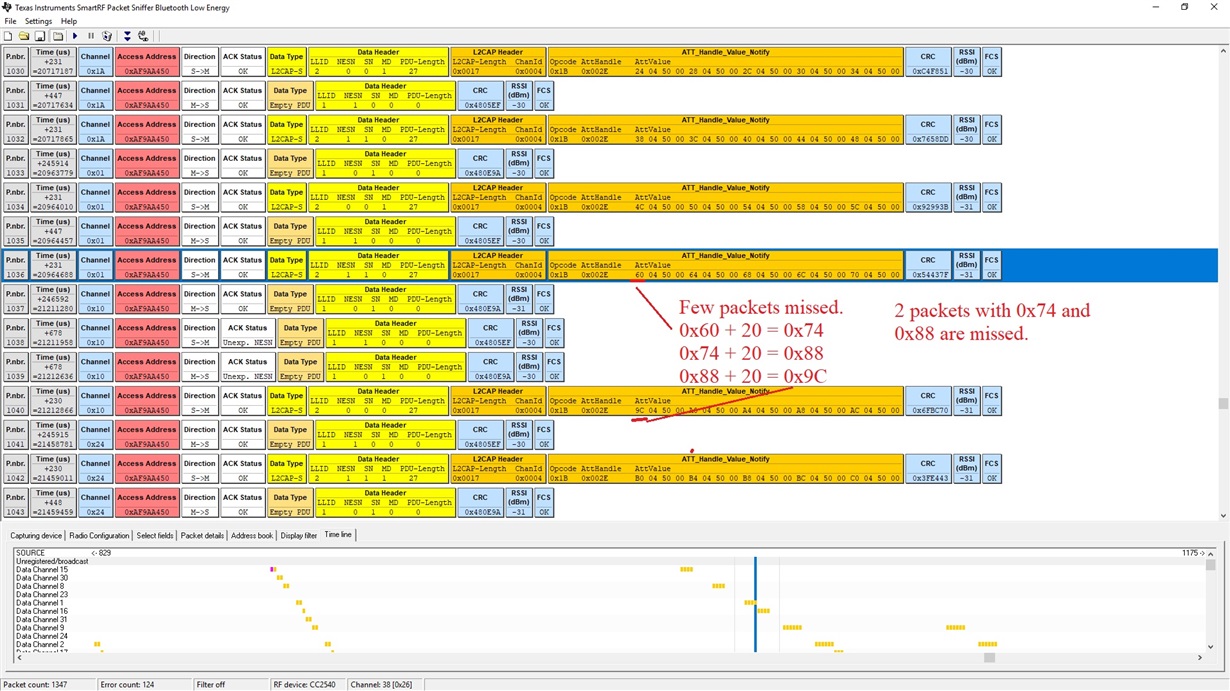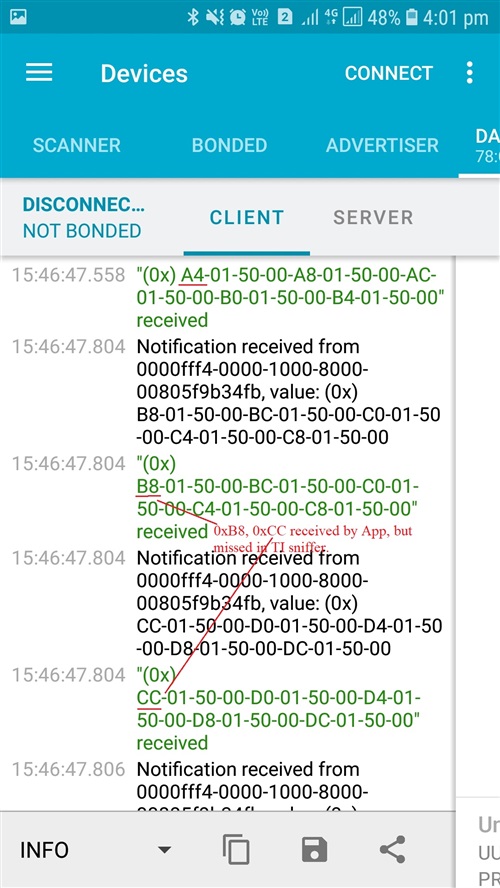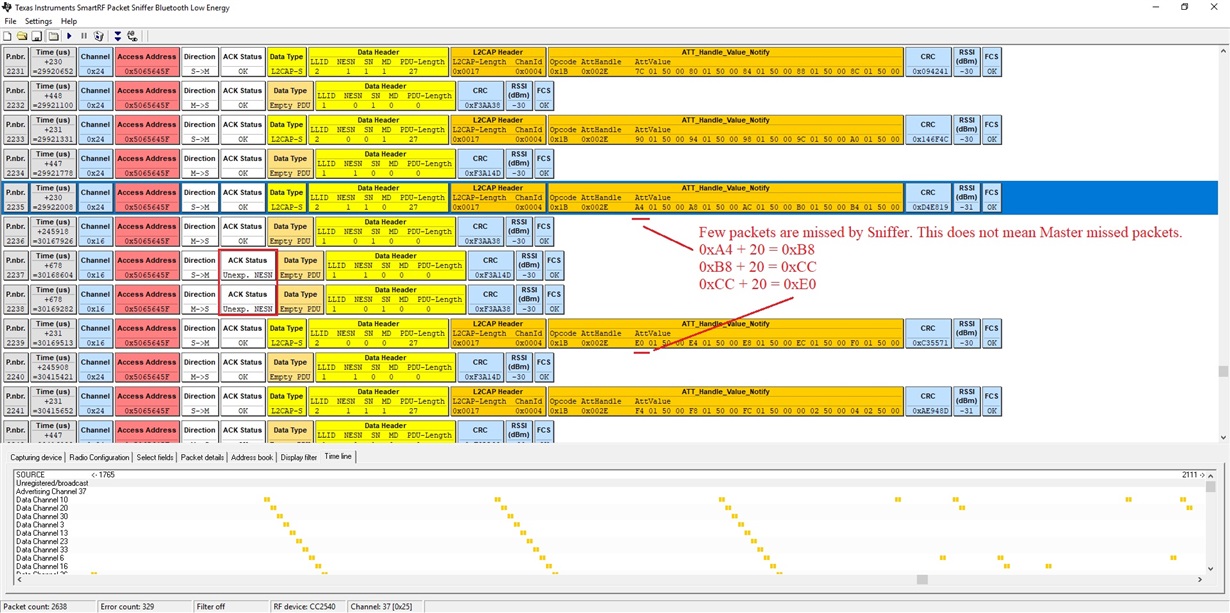Hello Eirik,
I am not sure how to change the settings so that I can keep the ticket under open. Since the ticket is under resolved I am added my query separately.
As per above link, my query is
Need more clarity on your statement "Any packet transmitted must be acknowledged before the next packet is transmitted". Is this statement even valid for "Notify" packets.
I was going through BLE Core4.2 Vol3 Part F (ATT) Section 3.3.2 (Page 2171) and co-relating with IEEE 802.15.4 Retry, Error indication to application etc.
Since Notification packets are to a specific Client, whether there will be any Physical level ACK from client ?. Whereas for Broadcast packets from Server or Client, there wont be Physical layer Ack. If this is true (Physical Ack from Client), then what layer of Client will be sending "Confirmation" packet for "Indication" packet from Server. Is this from "ATT" layer of stack ?
Even in TI SmartRF BLE sniffer I am seeing "ACK Status" as "OK" for Notification packets. What does it mean. To my understanding, in Connection interval, at Anchor point Master will send a packet and slave will send a empty PDU packet in response, these are for Synchronization. For both M->S and S->M there wont be any separate "Ack" packets. But for "Notify" will there be any separate Physical layer Ack packets.
Thanks & Regards
Vishnu Beema






